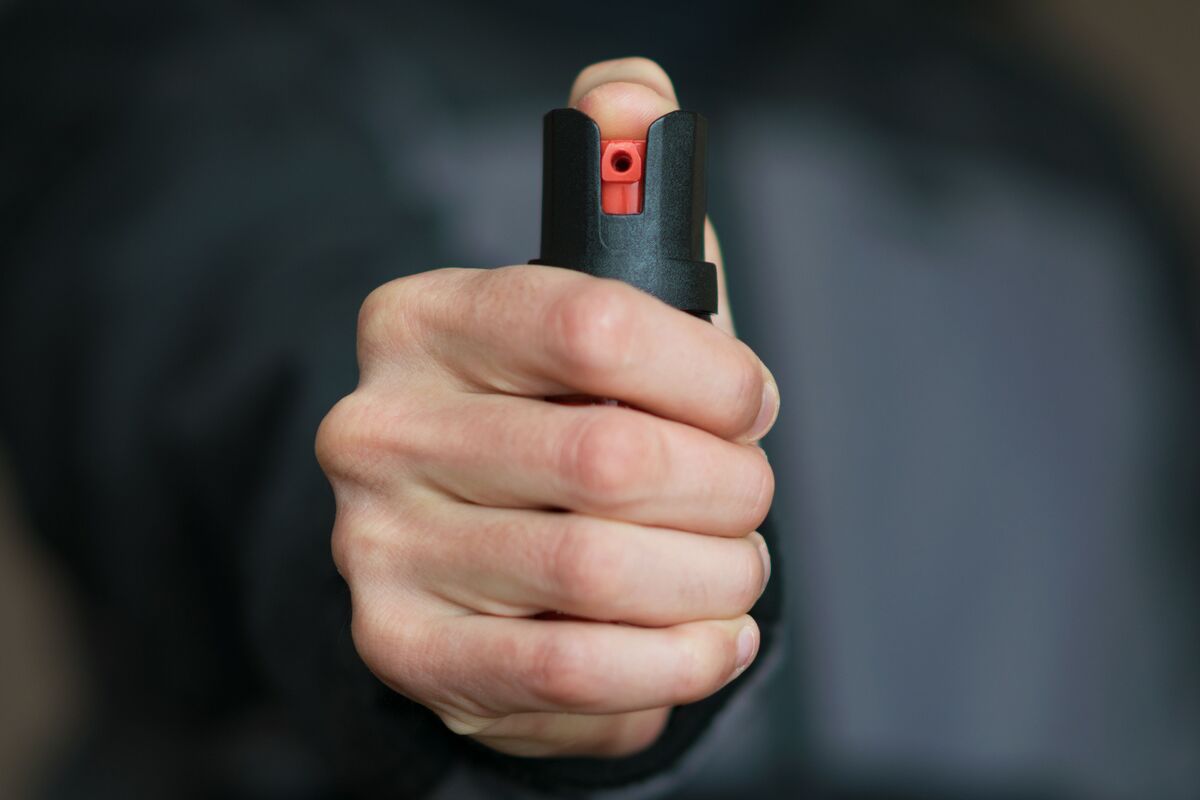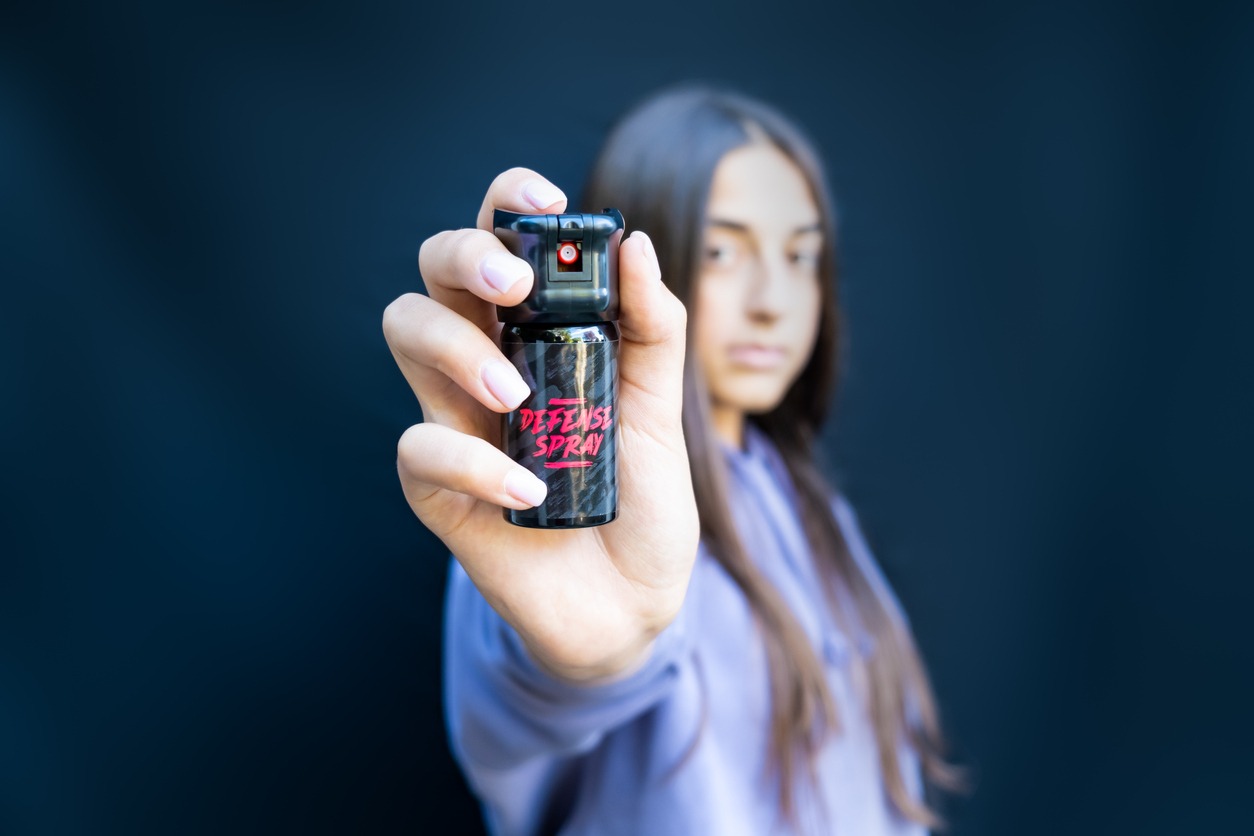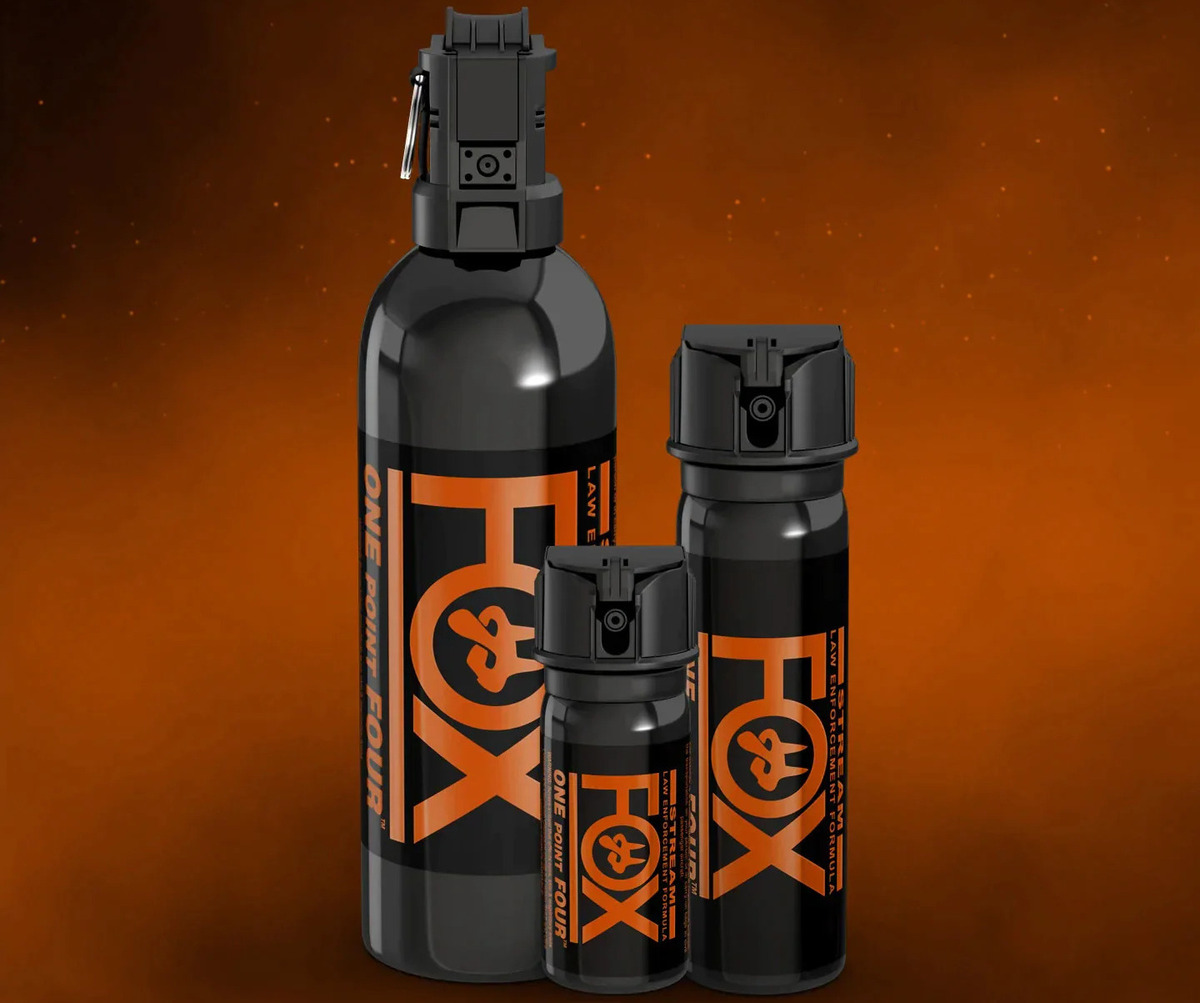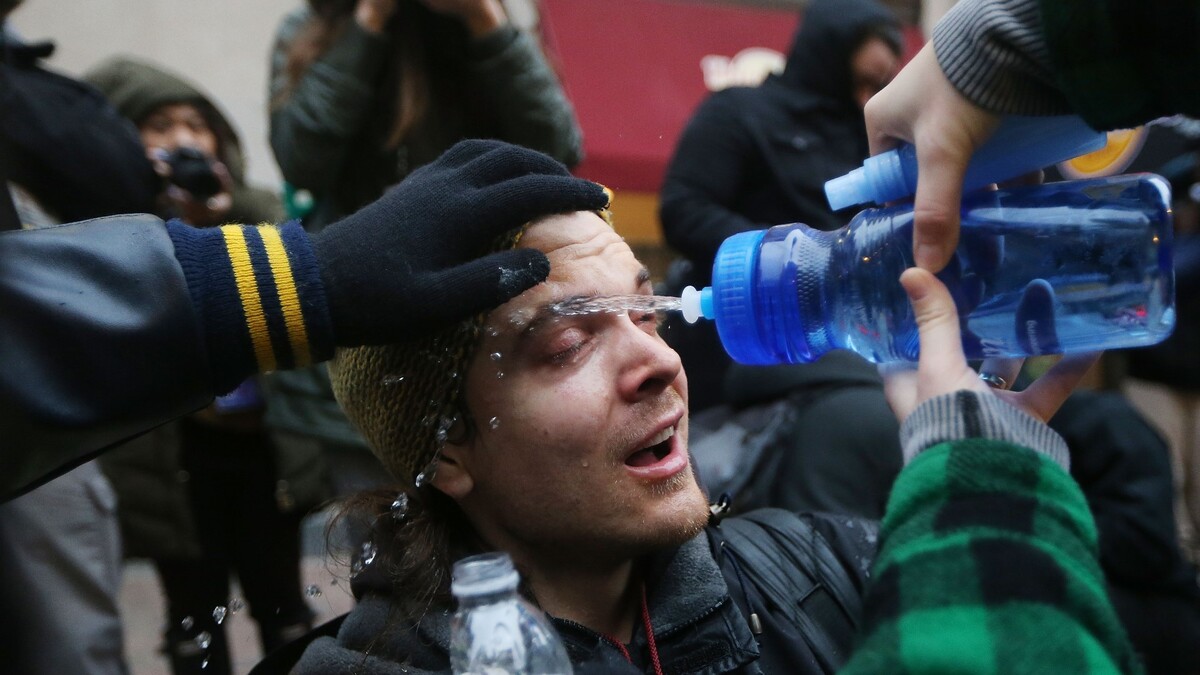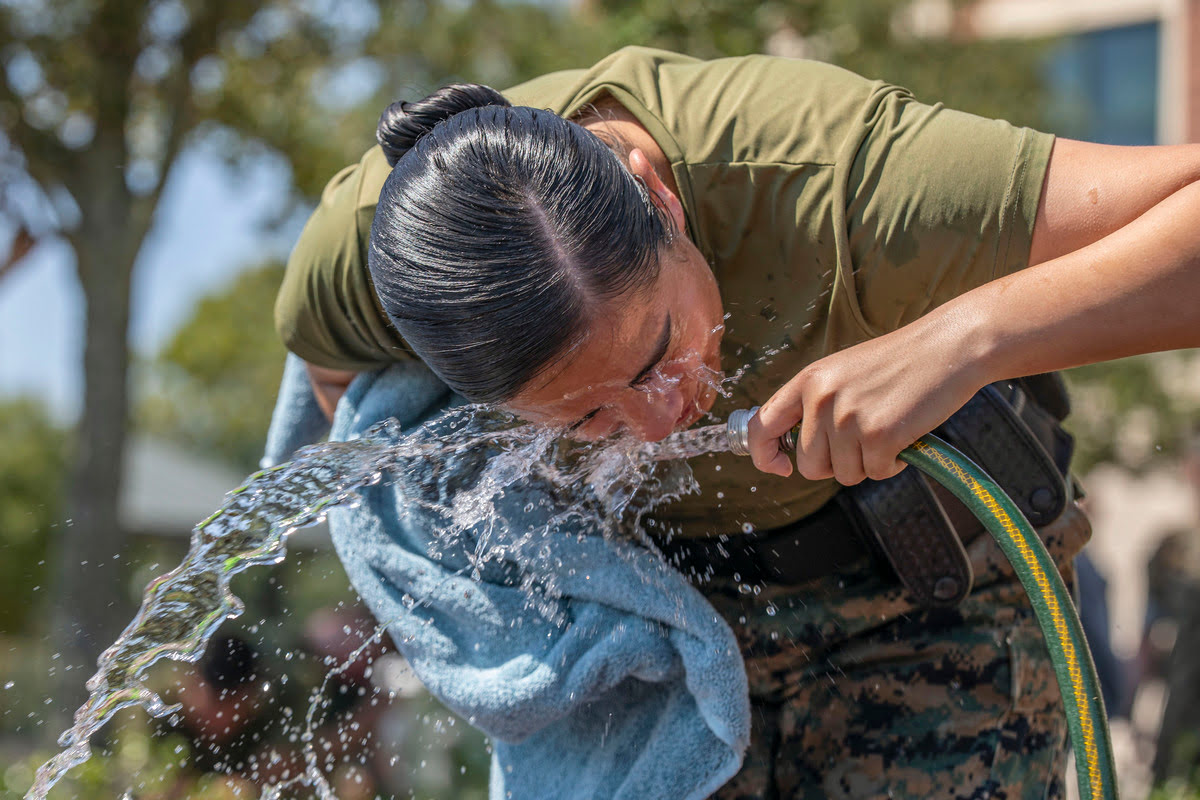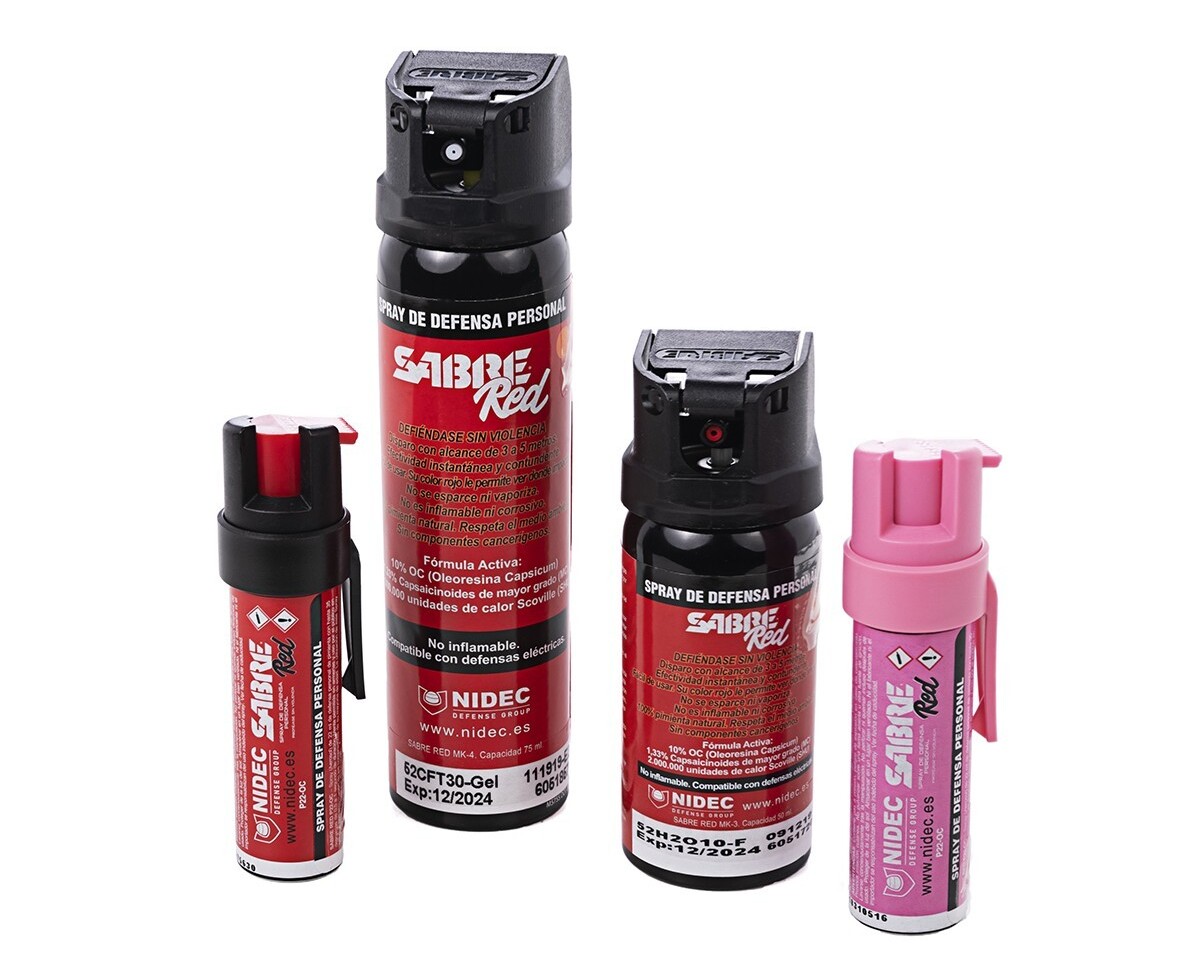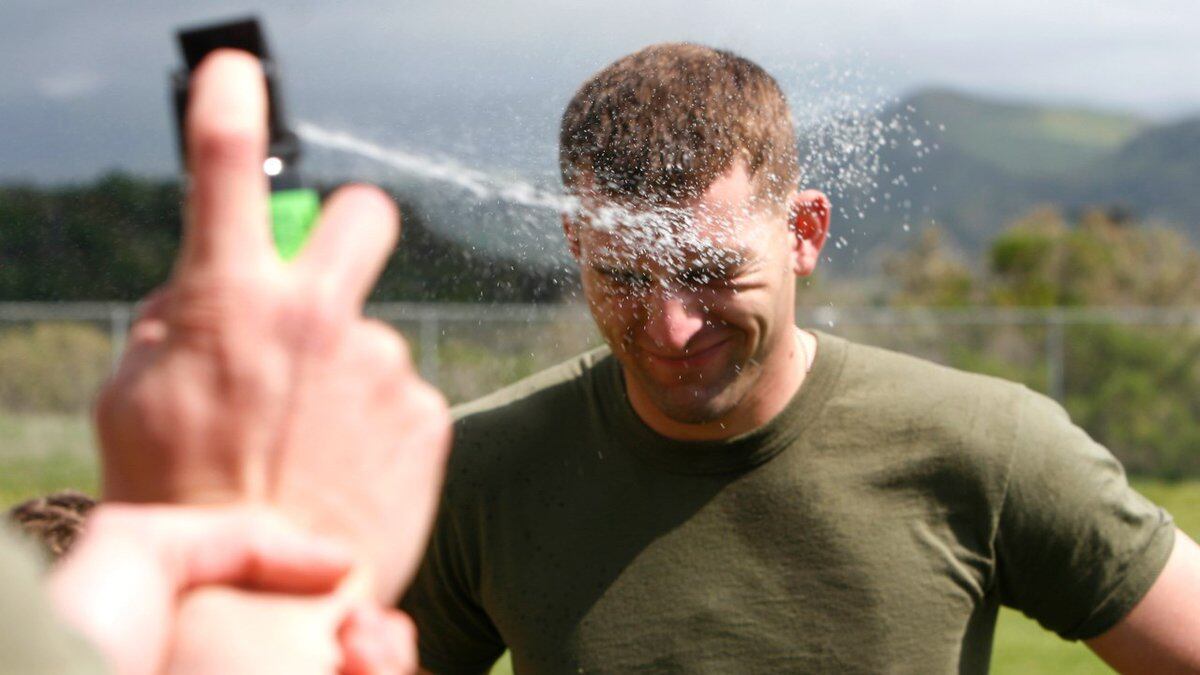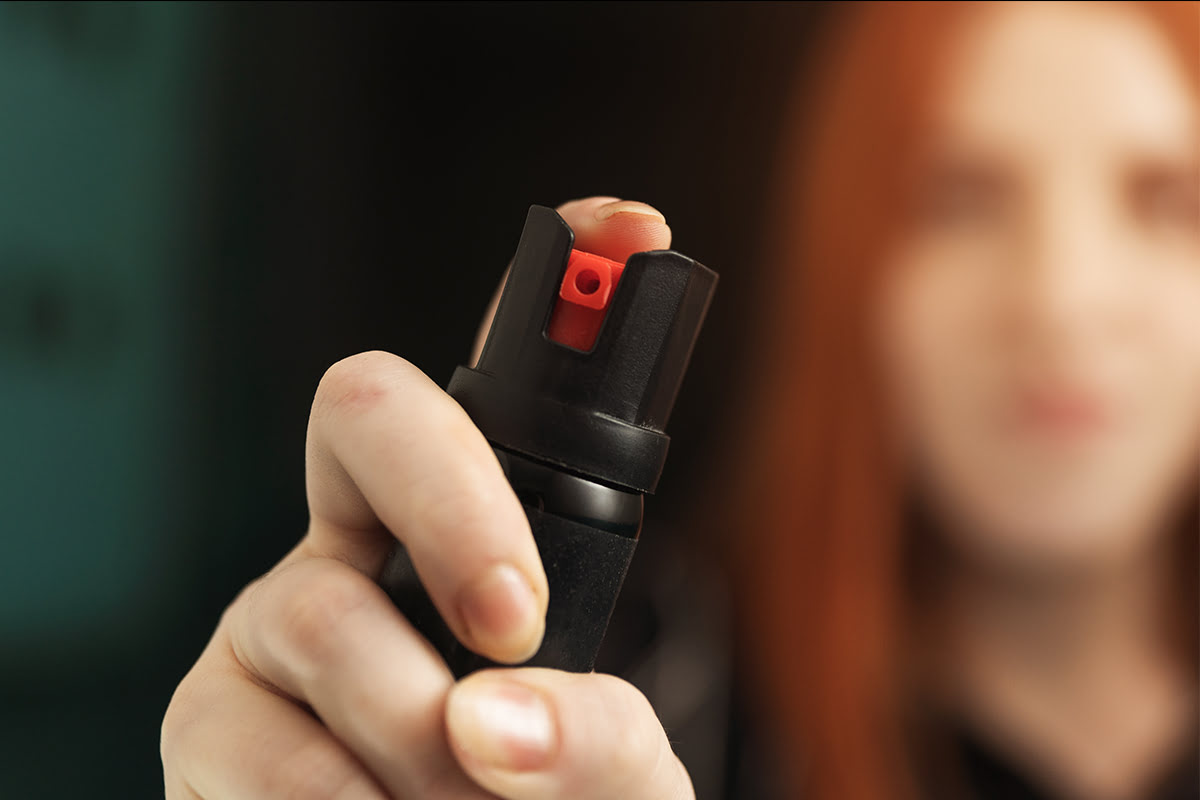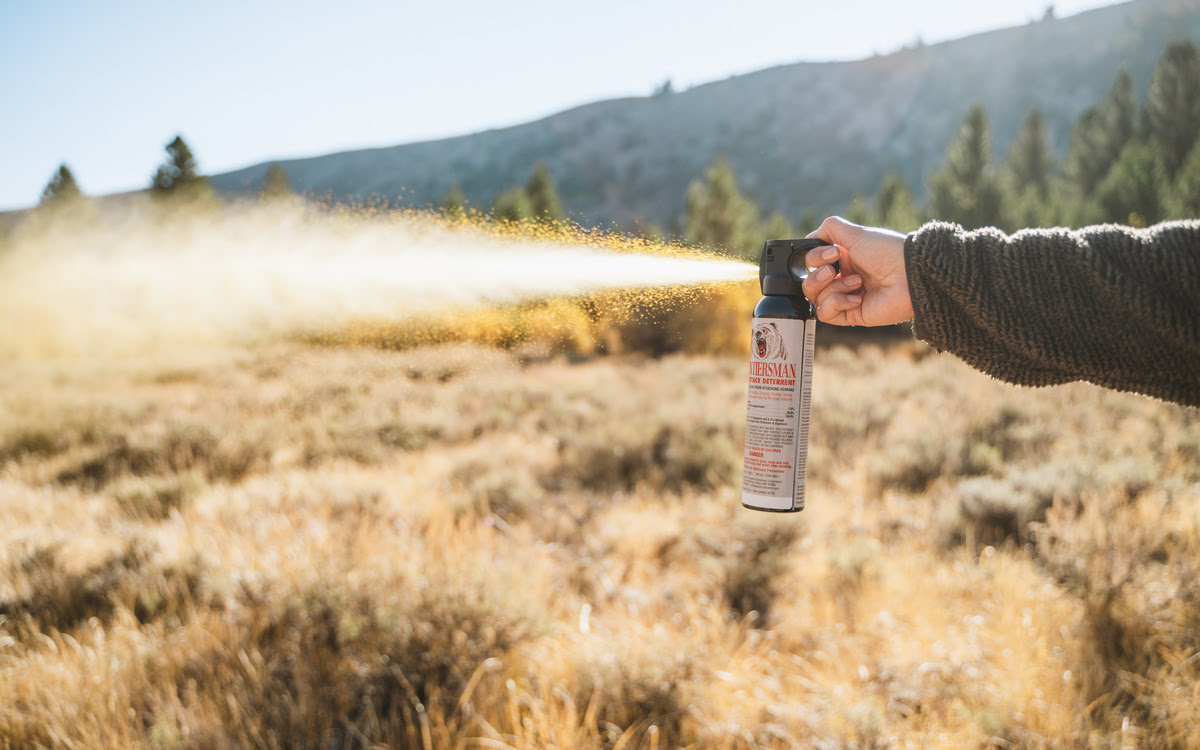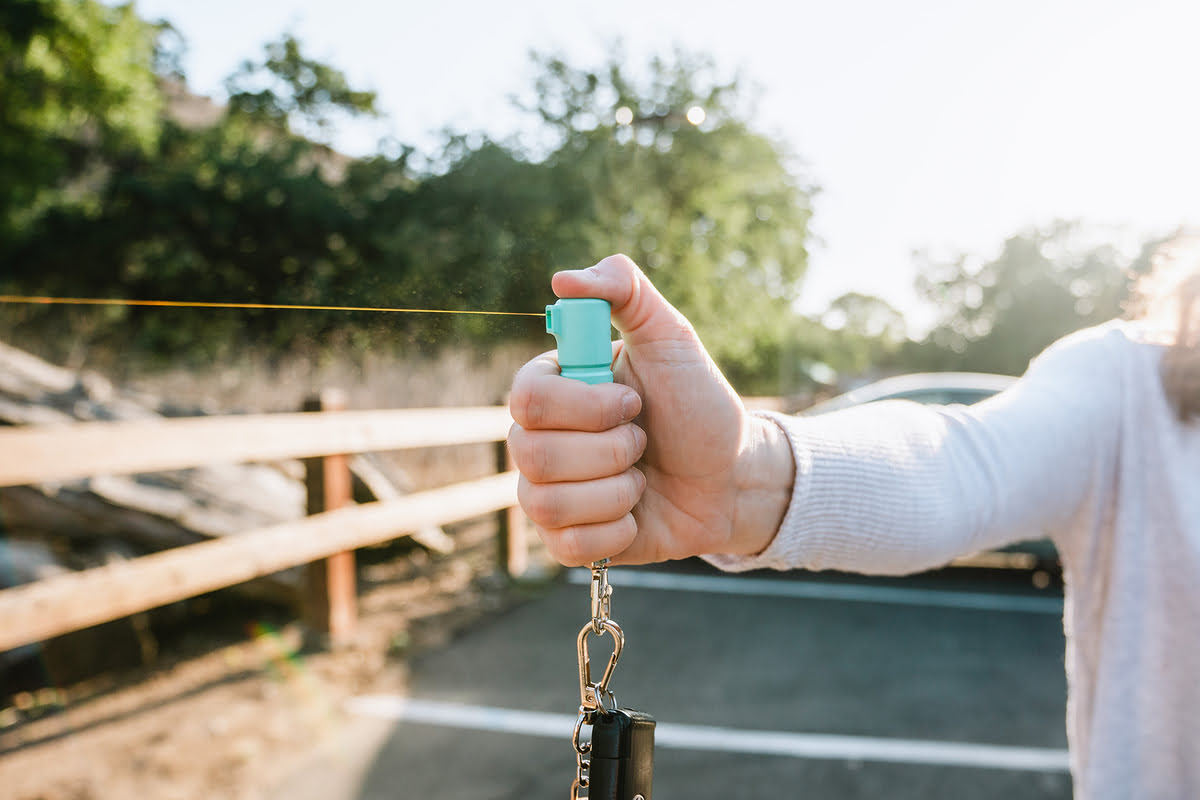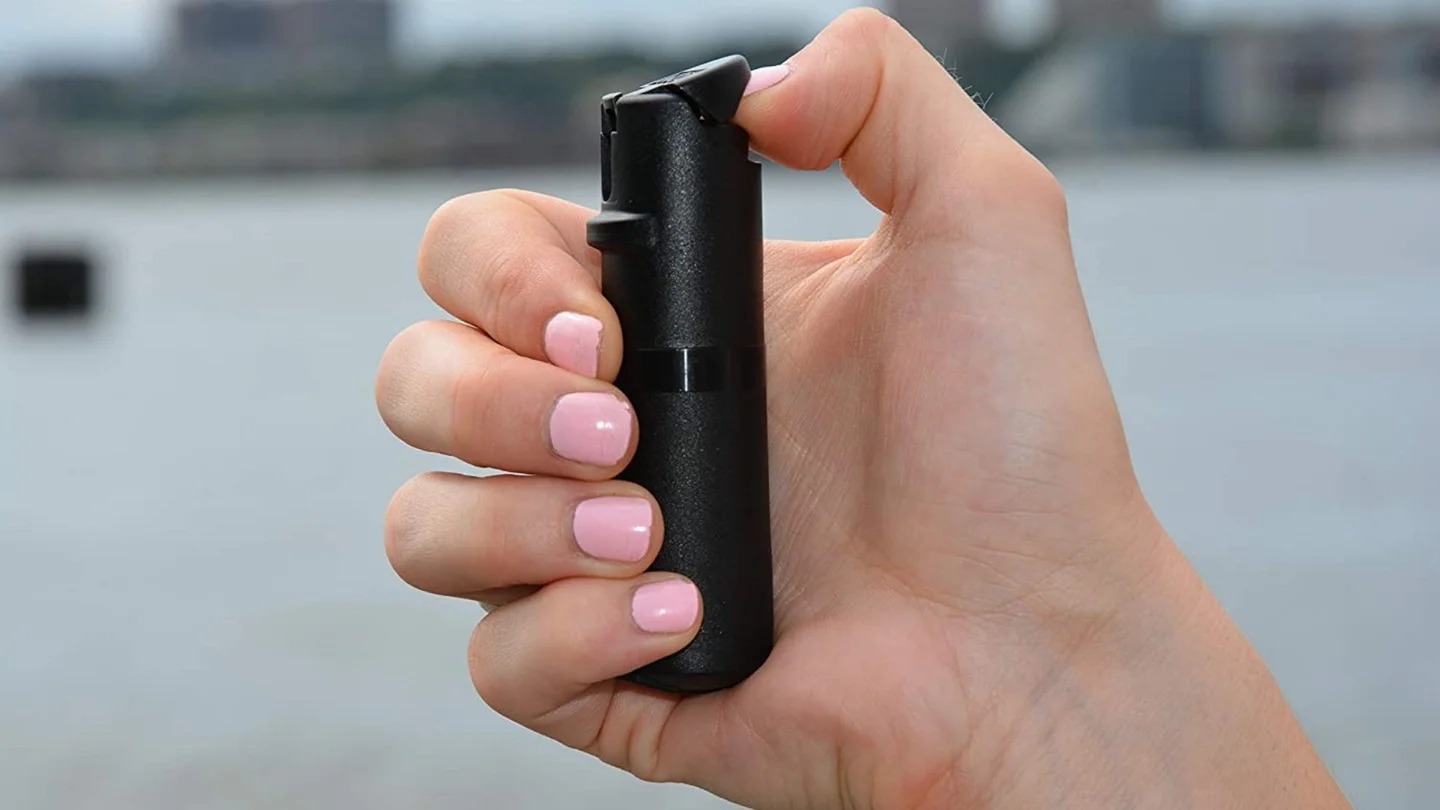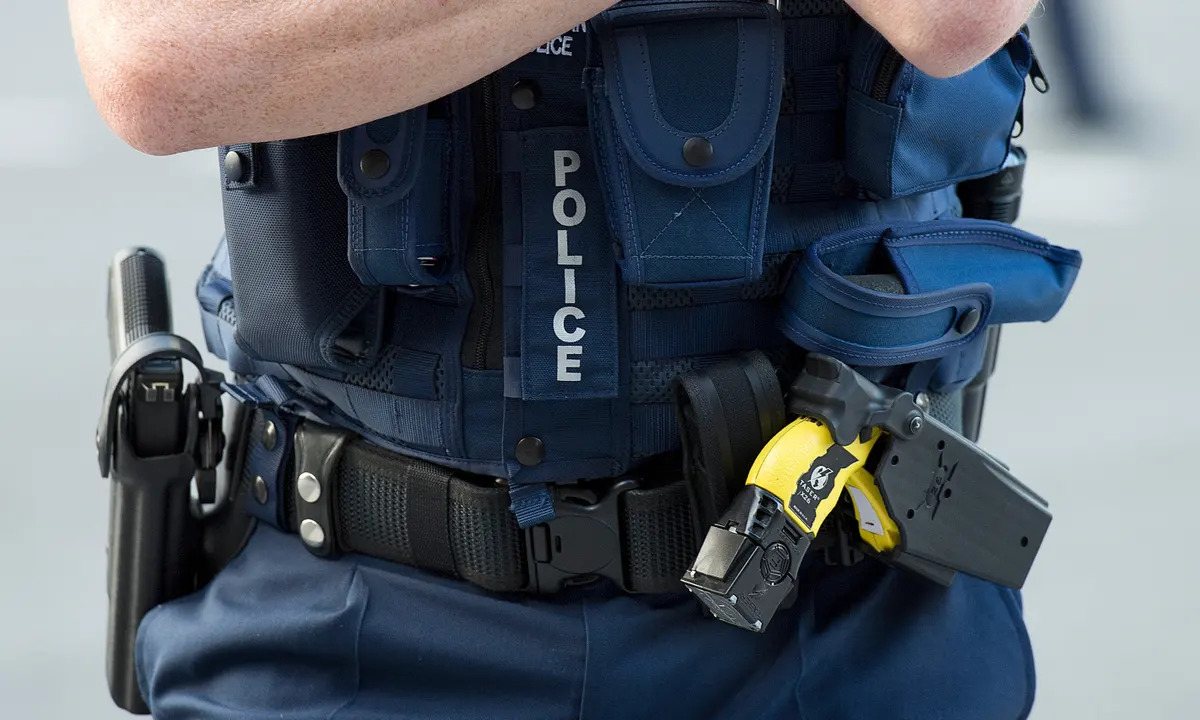Home>Home Security and Surveillance>What Is Mace Vs Pepper Spray?
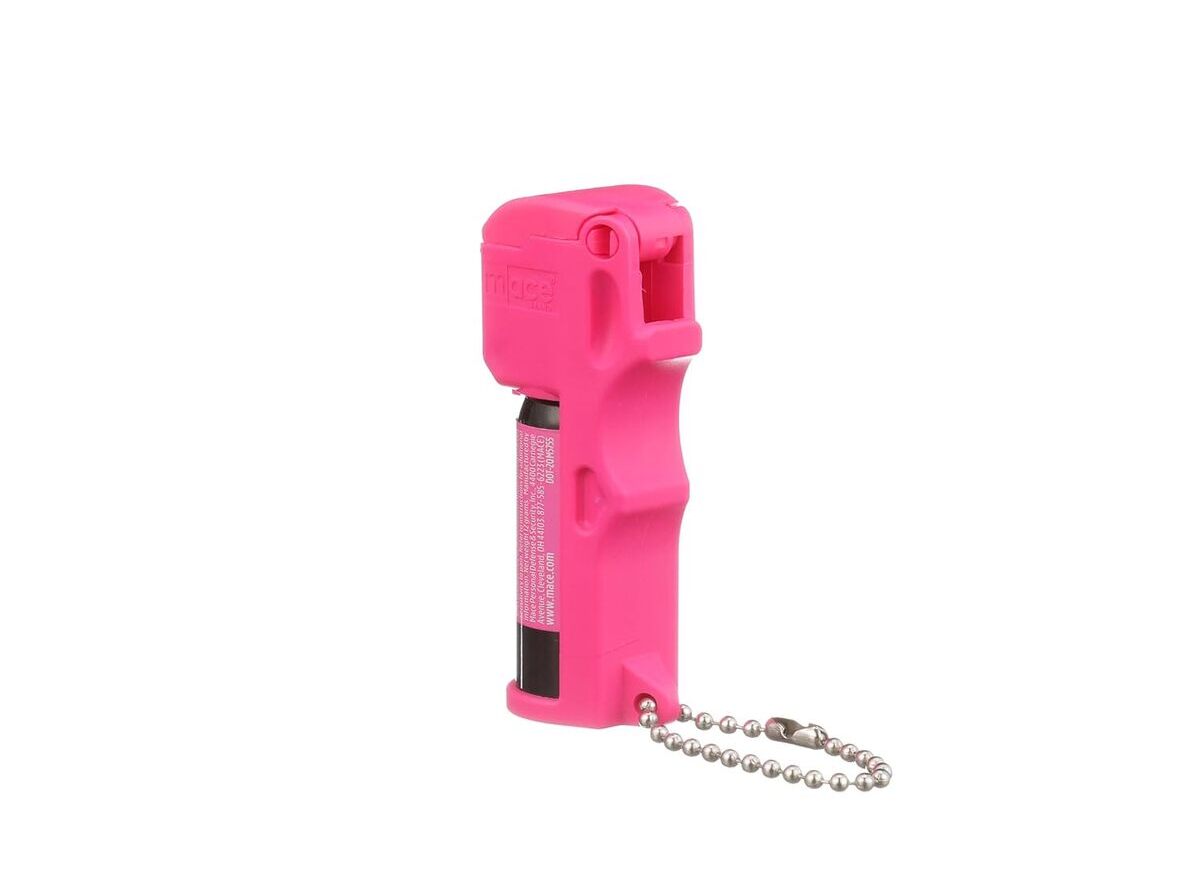

Home Security and Surveillance
What Is Mace Vs Pepper Spray?
Modified: March 6, 2024
Learn about the difference between mace and pepper spray for home security and surveillance. Find out which one is best for your protection.
(Many of the links in this article redirect to a specific reviewed product. Your purchase of these products through affiliate links helps to generate commission for Storables.com, at no extra cost. Learn more)
Introduction
When it comes to personal safety and self-defense, having the right tools at your disposal is crucial. In the realm of non-lethal self-defense options, two popular choices are mace and pepper spray. While these terms are often used interchangeably, there are differences between the two. Understanding these differences can help you make an informed decision about which option is best suited to your needs.
Mace and pepper spray are both aerosol sprays that contain chemicals known as irritants. These substances are designed to temporarily incapacitate an attacker, giving you the opportunity to escape and seek help. While they share the same objective, there are subtle variations in their composition and effectiveness.
In this article, we will delve into the definition of mace and pepper spray, explore the similarities and differences between the two, examine their effectiveness as self-defense weapons, discuss legal considerations, and provide guidelines for safe usage.
By the end of this article, you will have a comprehensive understanding of mace and pepper spray, enabling you to make an informed choice on which product is best suited to your personal safety needs.
Key Takeaways:
- Mace and pepper spray are non-lethal self-defense tools with differences in potency and composition, so understanding their unique attributes is crucial for making an informed choice.
- Prioritize personal safety, understand legal regulations, and practice responsible use when considering mace or pepper spray for self-defense, as they provide a valuable tool for creating an opportunity to escape and seek help.
Read more: What Is Bear Spray Vs Pepper Spray
Definition of Mace and Pepper Spray
Mace and pepper spray are both non-lethal self-defense weapons that are widely used to deter attackers. Although they serve a similar purpose, there are distinct differences in their formulations.
Mace is a brand name that is often used as a generic term to refer to chemical aerosol sprays used for self-defense. It typically contains a combination of chemical irritants, including tear gas, that cause irritation to the eyes, respiratory system, and skin of an attacker.
On the other hand, pepper spray, also known as OC (Oleoresin Capsicum) spray, is made from an extract of chili peppers. The active ingredient in pepper spray is capsaicin, which is a potent irritant that causes severe burning, pain, and temporary blindness when it comes into contact with the eyes, nose, or skin.
Both mace and pepper spray are available in various forms, including canisters, keychain dispensers, and even disguised as everyday objects. They are designed to be easily carried and deployed, giving you a portable means of protection whenever you need it.
It is important to note that mace and pepper spray are intended for self-defense purposes only and should not be used maliciously or unlawfully. Understanding the differences between the two can help you choose the most suitable option for your personal safety needs.
Similarities between Mace and Pepper Spray
While there are differences in their formulations, mace and pepper spray also share several similarities. These similarities make them effective self-defense tools in certain situations. Here are some of the commonalities between mace and pepper spray:
- Non-lethal: Both mace and pepper spray are non-lethal options, meaning they are designed to incapacitate an attacker temporarily without causing any long-term harm or permanent damage.
- Ease of use: Both mace and pepper spray are designed to be simple and straightforward to use. They are typically equipped with a nozzle or trigger mechanism that allows for easy spraying, providing an immediate defense mechanism when needed.
- Range of application: Mace and pepper spray can be effectively used at a relatively close range, typically within a few feet of the intended target. This makes them effective in close-quarter situations, giving you a quick and practical means of defense.
- Visual and respiratory effects: Both mace and pepper spray cause similar effects on the attacker. They both irritate the eyes, causing pain, tearing, and temporary blindness. Additionally, they can affect the respiratory system, causing coughing, choking, and difficulty breathing.
- Portable and concealable: Both mace and pepper spray are available in compact sizes, making them portable and easy to carry. Many options come with keychain attachments, allowing for convenient access. Additionally, they can be purchased in disguised forms, such as lipstick or pen-like containers, enhancing their concealability.
These similarities demonstrate the effectiveness of both mace and pepper spray as self-defense tools. Whether you choose one over the other will depend on individual factors such as personal preference, the level of potency desired, and the legal regulations in your specific location.
Differences between Mace and Pepper Spray
While mace and pepper spray have similarities in their purpose and usage, there are distinct differences between the two. Understanding these differences can help you choose the most appropriate option for your self-defense needs. Here are some notable contrasts:
- Chemical composition: Mace typically contains a combination of chemical irritants, including tear gas, while pepper spray is made from the extract of chili peppers and contains capsaicin. The chemical compounds in mace and pepper spray affect the body differently, resulting in varying levels of effectiveness.
- Effects on the attacker: Mace primarily irritates the eyes, nose, and skin of the attacker, causing tearing, burning, and discomfort. It also affects the respiratory system, resulting in coughing and difficulty breathing. In contrast, pepper spray’s active ingredient, capsaicin, causes intense burning pain, temporary blindness, and involuntary closing of the eyes, giving you valuable time to escape.
- Potency: Pepper spray is generally considered to be stronger and more potent than mace due to the high concentration of capsaicin. This higher potency translates to a quicker and more immediate effect on the attacker, increasing your chances of incapacitating them and creating a window for escape.
- Adverse effects: While both mace and pepper spray can cause temporary discomfort and pain, pepper spray, with its higher concentration of capsaicin, tends to produce more intense and longer-lasting effects. The severity of these effects may vary depending on the individual’s sensitivity, but it is crucial to understand and consider the potential consequences when choosing between the two.
- Legalities: The legal regulations surrounding the use and possession of mace and pepper spray can vary depending on your location. It is essential to research and understand the laws in your area before purchasing and carrying these self-defense tools to ensure compliance with local regulations.
Considering these differences, it is important to weigh the advantages and disadvantages of mace and pepper spray based on your specific needs and preferences. Both options are effective in certain situations, but understanding their unique attributes can help you make an informed decision.
When choosing between mace and pepper spray, consider the intended use and legal restrictions. Mace is a tear gas, while pepper spray is an inflammatory agent. Check local laws before purchasing.
Effectiveness of Mace and Pepper Spray as Self-Defense Weapons
When it comes to self-defense, both mace and pepper spray can be highly effective tools. However, their effectiveness can vary depending on several factors. Here are some considerations to keep in mind when evaluating the effectiveness of mace and pepper spray:
- Target’s pain tolerance: The level of effectiveness of mace and pepper spray can depend on the pain tolerance of the attacker. While some individuals may be more sensitive to the effects of these sprays, others may have a higher pain threshold, which could impact the overall effectiveness of the self-defense tool.
- Situational factors: The effectiveness of mace and pepper spray also depends on the specific circumstances in which they are used. Factors such as proximity to the attacker, the element of surprise, and the ability to aim accurately can all affect the overall outcome of the situation.
- Quick response: Both mace and pepper spray are designed to provide an immediate response when faced with an attacker. However, it is important to remember that their effectiveness relies on your ability to quickly retrieve and deploy the spray. Regular practice and familiarity with the tool can enhance your response time and increase the likelihood of a successful outcome.
- Size and potency: The size of the spray canister and the potency of the chemical ingredients play a role in determining the effectiveness of mace and pepper spray. Larger canisters typically contain more product and provide a longer duration of use. Similarly, pepper sprays with higher concentrations of capsaicin tend to be more potent and have a stronger effect on the attacker.
- Training and technique: While mace and pepper spray are relatively easy to use, proper training and technique can enhance their effectiveness. Learning how to aim accurately, understanding the effective range, and practicing situational awareness can help you maximize the impact of these self-defense tools.
It is important to note that the effectiveness of mace and pepper spray does not guarantee complete incapacitation of an attacker. These tools are meant to provide a temporary advantage, giving you the opportunity to escape and seek help. Additionally, it is crucial to follow up with appropriate measures, such as contacting local authorities, after using these sprays to ensure your safety.
Ultimately, the effectiveness of mace and pepper spray relies on various factors, including the specific circumstances, the individual wielding the tool, and the characteristics of the attacker. Proper understanding, training, and responsible use can significantly enhance their effectiveness as self-defense weapons.
Read more: Tear Gas Vs Pepper Spray: Which Is Worse
Legalities and Restrictions on Mace and Pepper Spray
Before purchasing and carrying mace or pepper spray for self-defense, it is crucial to understand the legalities and restrictions surrounding their use. Laws and regulations regarding these self-defense tools can vary depending on your jurisdiction. Here are some key considerations:
- Legal age: Many jurisdictions require individuals to be a certain age to purchase and possess mace or pepper spray. The legal age requirement can range from 18 to 21, so it is essential to verify the age restriction in your specific area.
- Permit requirements: Some regions may require you to obtain a permit or license before purchasing or carrying mace or pepper spray. These permits may involve background checks, training, or additional documentation. Make sure to research the specific requirements in your location and comply with any necessary procedures.
- Restricted areas: Certain areas, such as schools, government buildings, airports, and public transportation systems, may have restrictions on carrying mace or pepper spray. It is important to familiarize yourself with any prohibited locations within your jurisdiction to avoid legal complications.
- Size and potency restrictions: Some jurisdictions may regulate the size and potency of mace and pepper spray canisters. They may place limits on the concentration of active ingredients or restrict the maximum volume of the spray. Ensure that any product you purchase adheres to these regulations.
- Usage guidelines: It is crucial to understand the proper usage guidelines and restrictions for mace and pepper spray in your area. This includes using the spray for self-defense purposes only and refraining from using it in a malicious or unlawful manner.
To stay informed about the legalities surrounding mace and pepper spray, it is advisable to consult local law enforcement agencies or legal professionals who specialize in self-defense laws. They can provide you with accurate and up-to-date information specific to your jurisdiction.
Remember, laws and regulations can change, so it is essential to periodically review and update your knowledge regarding the legalities and restrictions of mace and pepper spray use in your area.
How to Use Mace and Pepper Spray Safely
Using mace or pepper spray requires responsible and careful handling to ensure your safety and the effectiveness of the product. Keep the following considerations in mind when using mace or pepper spray:
- Familiarize yourself with the product: Before using mace or pepper spray, read and understand the instructions provided by the manufacturer. Pay attention to important details such as the effective range, recommended technique, and proper storage guidelines.
- Practice good grip: When holding the canister, maintain a firm grip to avoid accidental drops. A secure grip ensures that the spray remains within your control and reduces the risk of it being used against you.
- Aim for the face: While using mace or pepper spray, aim for the attacker’s face, specifically the eyes and nose. This maximizes the chances of temporarily incapacitating the individual, giving you time to escape and seek help.
- Maintain a safe distance: It is crucial to maintain a safe distance from the attacker while using mace or pepper spray. Typically, a distance of around 6 to 10 feet is recommended. This allows you to effectively deploy the spray and reduces the risk of it being pushed back toward you.
- Account for wind: Wind can impact the trajectory of the spray, potentially affecting its effectiveness. To minimize the risk of the spray blowing back into your face, position yourself upwind from the attacker or create a barrier between you and the wind.
- Use short bursts: Rather than continuously spraying, use short bursts of mace or pepper spray. This conserves the product and increases its effectiveness by allowing it to reach the attacker’s face more accurately.
- Escape and seek help: After deploying mace or pepper spray, promptly move away from the attacker and find a safe location. Contact local authorities immediately and provide them with a detailed description of the incident. Cooperate fully with law enforcement to ensure the incident is properly reported and investigated.
- Rehearse and practice: To become proficient in using mace or pepper spray, practice using inert or training sprays. Familiarize yourself with the mechanics of the product, practice your aim, and simulate various self-defense scenarios to improve your response time and accuracy.
Remember, the primary goal of using mace or pepper spray is to create an opportunity for you to escape a dangerous situation. It is important to act responsibly, adhere to legal regulations, and only use these self-defense tools when necessary and in accordance with the law.
Prioritize your personal safety above all else and consider seeking professional self-defense training to further enhance your skills and confidence in handling mace or pepper spray.
Conclusion
Mace and pepper spray are valuable non-lethal self-defense tools that can provide a sense of security and protection. While they share similarities, such as being portable, easy to use, and causing temporary incapacitation, there are distinct differences between the two.
Mace, a brand name often used generically, contains a blend of chemical irritants designed to irritate the eyes, respiratory system, and skin. Pepper spray, on the other hand, is derived from chili peppers and contains capsaicin, a potent irritant that causes intense burning, temporary blindness, and respiratory distress. Pepper spray tends to be more potent and have a quicker effect on the attacker compared to mace.
To ensure the safe and effective use of mace or pepper spray, it is essential to familiarize yourself with the legalities and restrictions in your area. Be aware of any age limits, permit requirements, and prohibited locations. Adhere to the guidelines provided by the manufacturer, practice good grip and aim techniques, and maintain a safe distance from the attacker.
Remember, mace and pepper spray are not guaranteed to completely incapacitate an attacker, but they provide a valuable tool for self-defense and can create a window of opportunity for escape and seeking help. Prioritize personal safety, stay informed about the laws and regulations in your jurisdiction, and consider seeking professional self-defense training to enhance your skills and confidence.
Ultimately, choosing between mace and pepper spray boils down to personal preference, level of potency desired, and legal considerations. By understanding the differences and practicing responsible use, you can make an informed decision and have a valuable tool at your disposal for personal safety and self-defense.
Frequently Asked Questions about What Is Mace Vs Pepper Spray?
Was this page helpful?
At Storables.com, we guarantee accurate and reliable information. Our content, validated by Expert Board Contributors, is crafted following stringent Editorial Policies. We're committed to providing you with well-researched, expert-backed insights for all your informational needs.

